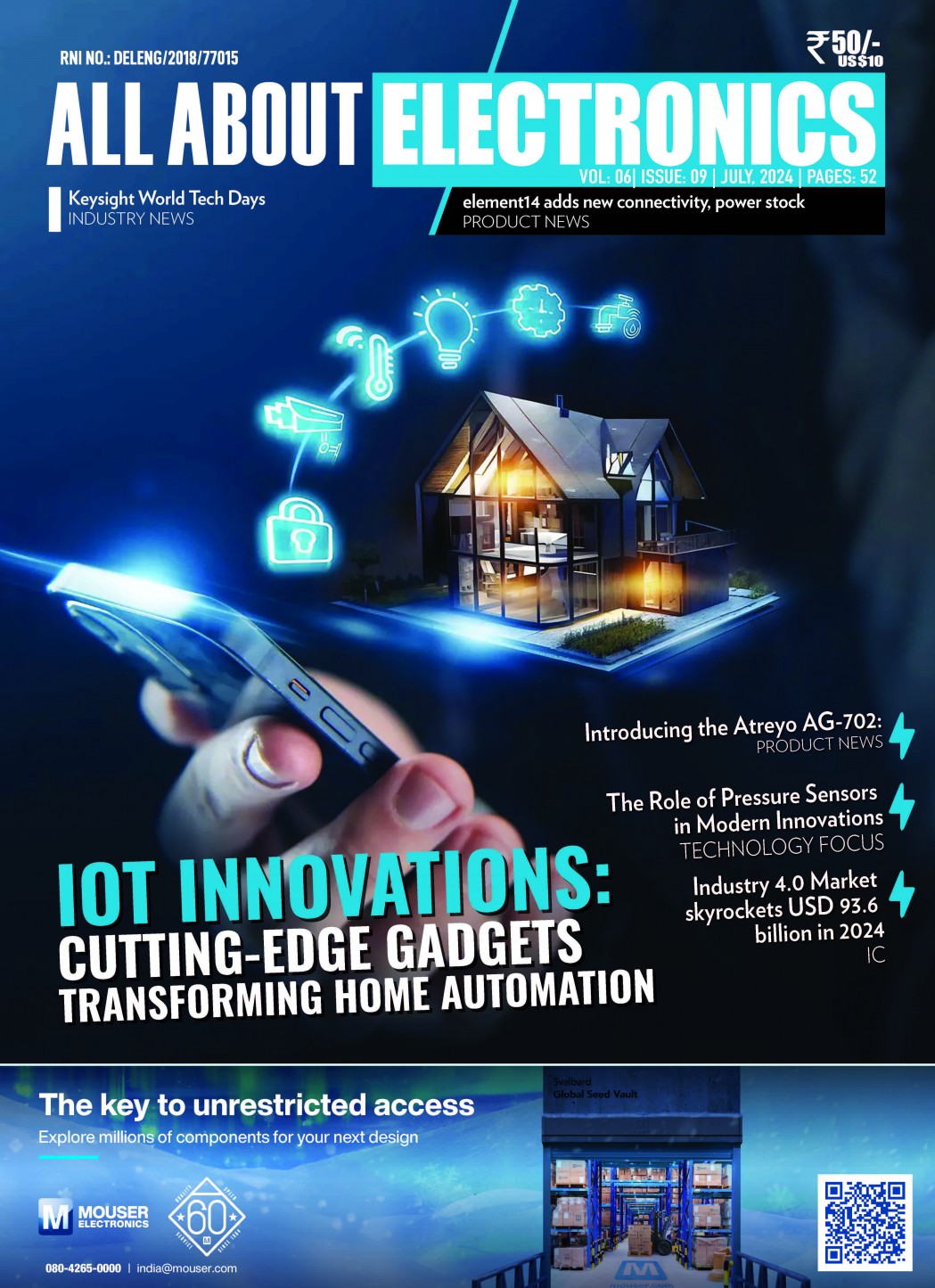Source : Mouser Electronics
The global demand for miniaturized devices continues to grow. Across a wide range of applications, from the latest automotive technology to innovations in smart medicine, users are demanding more functionality from the devices that shape everyday life.
While the smartphone has become one of the most familiar examples of this technology, there is an entire generation of connected devices forming the Internet of Things (IoT). IoT has been made possible by machine-to-machine communication, which allows devices to share data with each other. In this blog, we look at how the miniaturization movement is changing various sectors and technologies, and then explore a groundbreaking solution for this trend towards smaller technology.
Miniaturization Across the Sectors
In the medical world, many of these devices are small enough to wear, providing diagnosis and treatment for a wide range of conditions. Combined with developments in treatment technology, such as nebulizers and insulin delivery systems, patients can receive full medical care in the comfort of their own home.
Aside from the medical sector, the technology that has made smartphones so successful will also change how we use our vehicles. Touchscreen displays have combined with new methods to provide data to operators, including head-up displays (HUDs) and the use of augmented reality (AR). In the domestic market, the car of the future has been described as the “third living space,” where drivers enjoy the same level of functionality and comfort that they might experience in the home or workplace.
For commercial and industrial vehicles, the cabin is the workplace. The technology being integrated into today’s commercial and industrial vehicles matches and often exceeds that seen in even the most advanced domestic cars. Drivers and operators are equipped with application-specific controls, along with advanced navigation, monitoring, and communication systems.
Additionally, the entertainment industry has been quick to recognize the functionality that small, lightweight devices can offer. The virtual reality (VR) headset is no longer a niche item intended for the professional gamer and has become part of mainstream leisure activities. Beyond the home, the VR headset has applications in the industry world, where its unique abilities offer greater functionality for machinery operators.
Shrinking PCBs
To keep pace with the demands for increased functionality and miniaturized design, printed circuit board (PCB) components have been forced to shrink. The latest connectors intended for these compact PCBs often use a pitch of 0.5mm or less. The pitch is the measured distance between the center of one contact and the center of the next contact within the connector. These fine-pitch connectors create problems for designers. The challenge lies in achieving the smallest possible connector package while still delivering realistic performance. Despite this, connectors are still amongst the largest components on any PCB.
When the time comes to populate the PCB with components, the connector needs to be placed with a very high level of accuracy. With a contact pitch of as little as 0.5mm, the tolerances for placement are minimal. Accuracy becomes even more critical if the connectors provide the link between two parallel boards.
At the same time, designers also require board-to-board connectors that can deliver the high-speed communication required by the IoT. Many small connectors lack the internal space for features such as shielding against electromagnetic interference (EMI), which is essential for ensuring the superior signal integrity needed for high data rates.
Revolutionizing Device Connectivity
As demand for miniaturized, high-functionality devices grows, a groundbreaking solution from Molex emerges to offer efficient, reliable connectivity. Molex Premo-Flex Round Flat Cable (RFC) Jumpers deliver an alternative approach to conventional connector solutions (Figure 1). These cable jumpers are soldered directly to the PCB, eliminating the need for connectors or wire stripping. In board-to-board applications, they replace fixed solutions with a flexible connection. This adaptability makes them ideal for use in high-vibration environments such as those found in the automotive industry.

Figure 1: Premo-Flex RFC Jumpers replace fixed solutions with a flexible connection. (Source: Mouser Electronics)
The robust design also provides designers with a highly adaptable solution. The direct soldering process reduces the amount of space required for termination on the PCB. The ability to bend and flex allows board-to-board jumpers to accommodate complex design geometry, making them suitable for the limited space found in the latest consumer devices.
Their light weight and slim design make RFC cables an ideal solution for low-profile wearable technology, whether used for medical treatment or in the sports and leisure sectors. At the same time, the design of RFC Jumpers delivers the superior signal integrity required by the latest IoT-enabled devices.
RFC Jumpers are also highly advantageous for today’s price-conscious electronics market. By removing the need for fixed PCB-mounted connectors, the overall component cost can be reduced. In addition, simple termination and wave soldering techniques deliver cost savings in the manufacturing process in competitive applications.
Premo-Flex RFC Jumpers from Molex provide durable, low-cost, direct-to-PCB connections for virtually any industry. They are available in a wide selection of pitches, circuit sizes, and terminations that deliver highly capable solutions for a range of applications, from the simplest consumer device to the most advanced luxury vehicle.
Conclusion
In the era of digital transformation, the integration of the Molex Premo-Flex RFC Jumpers represents a significant leap forward in meeting the global demand for miniaturized, high-functionality devices. This approach not only addresses the challenges of space and cost efficiency, but also sets a new standard for connectivity solutions in the diverse and rapidly evolving landscape of technology. By offering flexible, durable, and cost-effective connections, the Molex RFC Jumpers are poised to redefine the capabilities of devices across industries, from healthcare and entertainment to automotive and industrial applications.
To learn more, visit www.mouser.com












